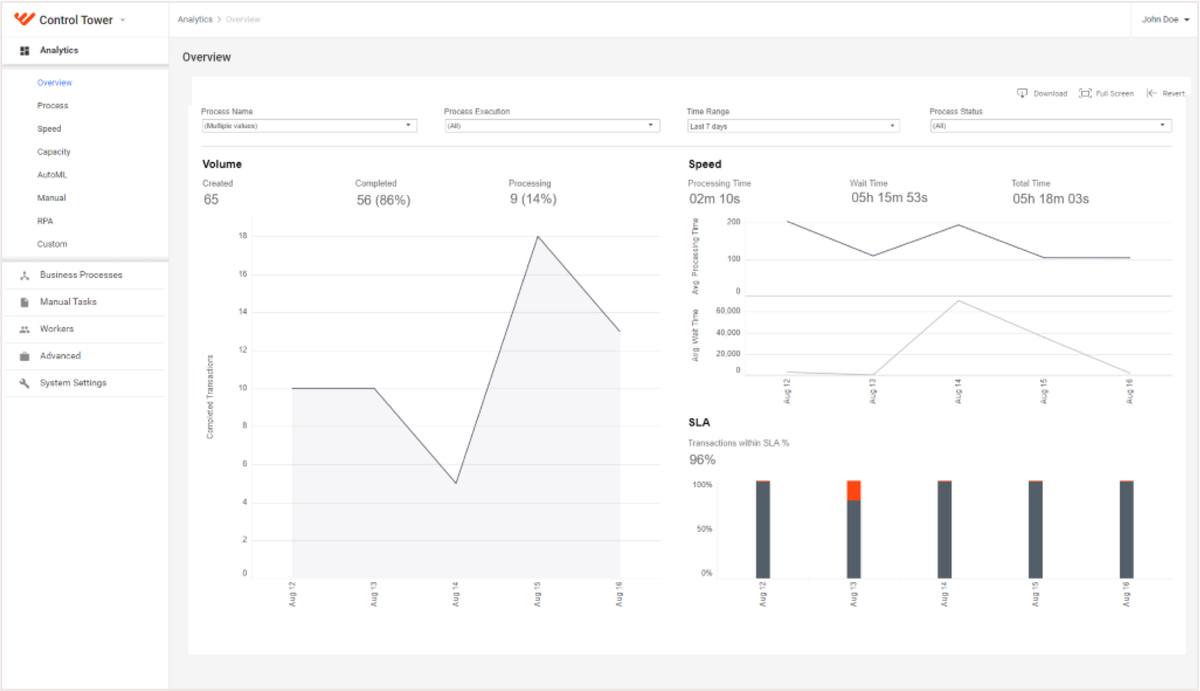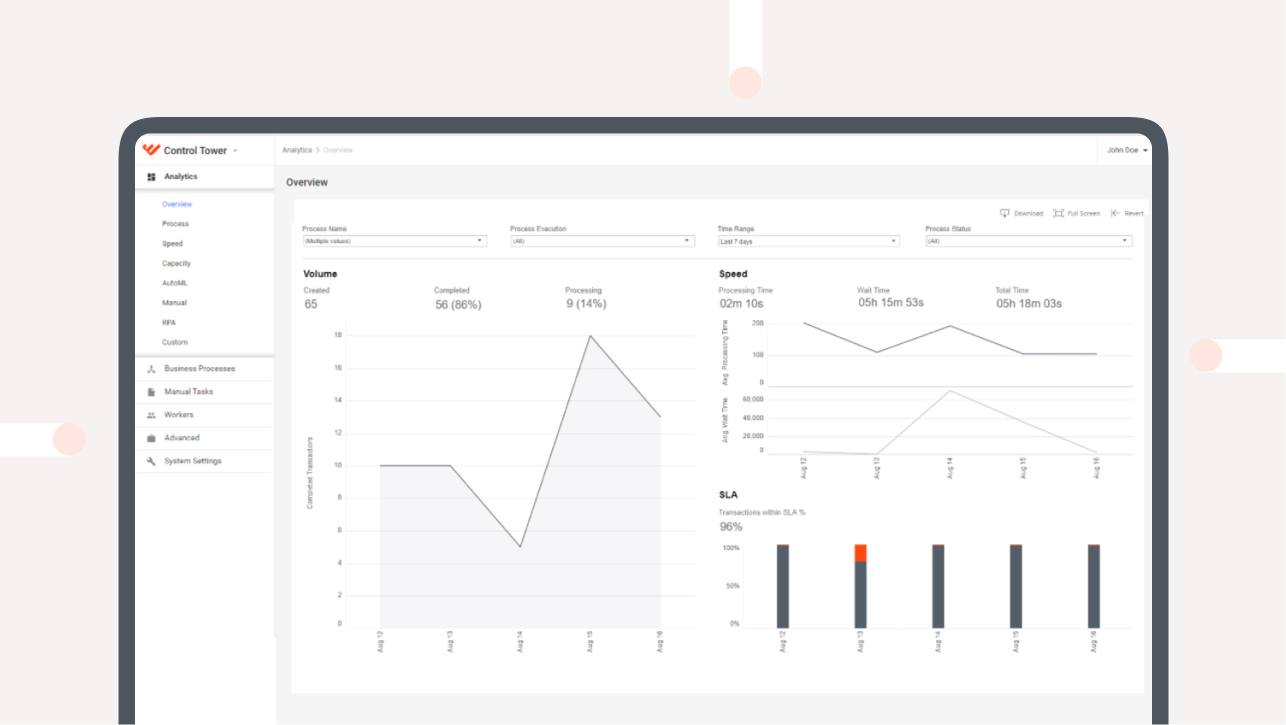Automation tools give enterprises the ability to streamline their business processes, make them more productive, improve regulatory compliance, and significantly bring down the time required for their implementation. However, it can do a lot more than that. One of the great, but often overlooked, benefits of introducing Intelligent Automation into the company’s operations is the unique workforce insights it can offer through operational analytics.
According to Capgemini’s research of more than 600 executives from USA, Europe and China, 80% of the respondents agreed that operational analytics played a pivotal role in creating competitive advantage.
The digital workforce of RPA and cognitive robots is easily traced and auditable, which means that automation software accumulates a large amount of precious data about the automated business processes that can be used to analyze and further improve operations. As a result, automation analytics allows the company to continuously improve its performance against set automation goals and benchmarks and maximize its ROI.
What is operational analytics?
Operational analytics in automation is a set of tools, technologies, and techniques for discovery, interpretation, and communication of important patterns in data about the performance and health of your automated business processes. Another critical application of analytics is applying the discovered data patterns for making decisions related to changing and improving the existing automation solution and, ultimately, continuously improving the company’s operations.
The combination of Intelligent Automation and analytics allows us to quickly identify bottlenecks in automated business processes and proactively correct them. One benefit of this solution is that it enables excluding “guesses and assumptions” from the process:
- The automation tool gathers a large amount of data about the process execution
- Its data analysis component processes and visualizes the data so SMEs can easily interpret it
As a result, SMEs make decisions based on reliable data, not “gut feeling.”
Here is an example of how it happens in practice: A cognitive bot reads data from scanned invoices of various types, then an RPA bot uses this data to register the invoices and fill in forms in a SAP application. If an exception occurs during the process, it is sent to an employee to process through a manual task. Using automation analytics, an SME can see how long it took the bot to extract the data from the invoices, how many exceptions were sent to employees, how long it took to record the data in SAP and if any errors occur, and whether there was any downtime for the bots. Based on this and other data, the SME can tune the business process to make it more effective.
However, how can you make sure that you pay attention to critical metrics in the AI and RPA analytics you receive and make the most out of that information? You need to know what to measure.
What to measure?
Intelligent Automation data analytics collects, analyzes, and visualizes a large amount of data about your automated business processes. However, there is no use of digging deeply into data that might not be valuable. To continuously improve the performance and accuracy of the operations, you must define what you need to measure and track. Usually, the following vital metrics are gathered in operational analytics:
1. Execution speed
Speeding up the execution of processes is one of the main goals that organizations want to achieve through implementing Intelligent Automation. Monitoring the speed of your robots will help you find bottlenecks in the process execution. You can easily keep track of these figures:
- how long it took to execute the process each time
- which tasks took up the most processing time
- what document volume was processed during execution
- other similar metrics related to the automated process
2. Accuracy
Tracking the capacity of your automation solution in the operational analytics will allow you to see its workload and understand where optimization may be required. It includes analyzing:
- number of process executions and transactions in which exceptions occurred
- tasks that fail during execution and reasons for failure
- types of documents that were sent to employees for manual processing
3. Capacity
Tracking the capacity of your automation solution in the operational analytics will allow you to see its workload and understand where optimization may be required. It includes analyzing:
- volume of transactions per process execution
- transactions by work type
- resource utilization (CPU, RAM, HDD space) by different components of the tool (RPA, OCR and others)
- availability of bots during execution
- bot session details
- statuses and sessions distribution by volume
Depending on your solution and automated business processes, there might be other metrics you should track.
Automation analytics in WorkFusion
Intelligent Automation Cloud is equipped with built-in automation analytics that allows you to get real-time workforce insight into the automation processes, teams and operations — as well as make grounded decisions based on data which suggests how your processes will perform in the future.
Apart from advanced operational analytics, you will get insights into the whole Intelligent Automation solution with help from artificial intelligence (AI) analytics in the pre-built dashboards. This tracks critical metrics such as:
- processes overview
- speed of execution
- solution’s capacity
- performance of AutoML (machine learning) and RPA components
- manual task processing

If you want to see more data about your business processes, it is possible to create custom dashboards.
Analytical capabilities of Intelligent Automation Cloud have been recognized by leading industry experts, including HFS Research — which ranked us No. 1 for Innovation and Embedded Intelligence in their latest report, “HFS Top 10 Robotic Process Automation (RPA) Software Products 2019” — and Forrester Research — which recognized that “WorkFusion represents a strong path for analytics-based RPA automation” in “The Forrester Wave™: Robotic Process Automation, Q4 2019” report.






























